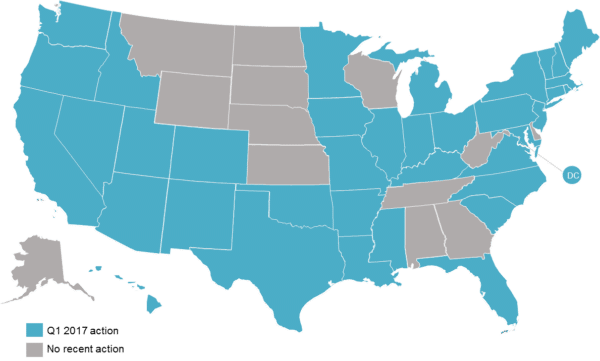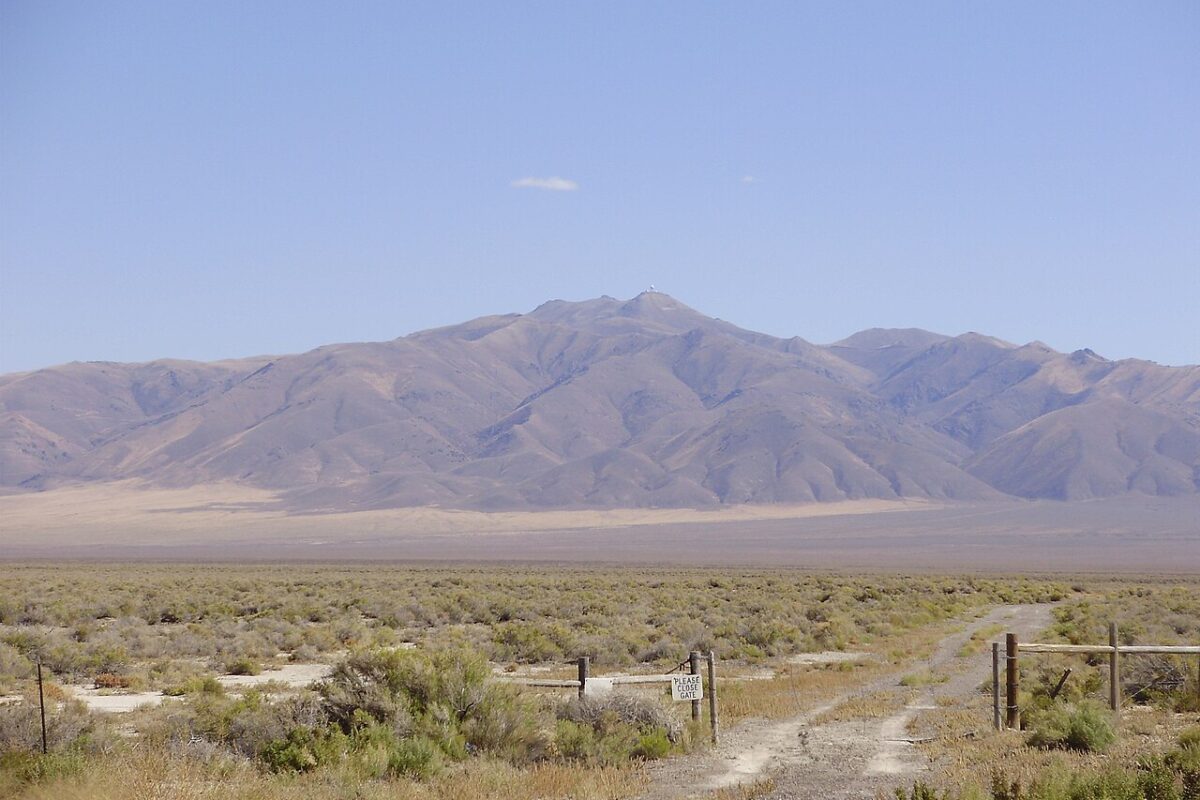Visitors to the United States from other nations are often surprised at how little power the federal government holds in many matters, and how much power is relegated to the states. This messy holdover of the difficult process of unifying the 13 former British colonies endures as a feature of the U.S. political system, and electricity policy is no exception.

This week North Carolina Clean Energy Technology Center (NCCETC) published a new report series which looks at actions taken at the state level on grid modernization. 50 States of Grid Modernization follows on the team’s 50 States of Solar publication, which is the definitive report on state-level policy actions taken in aggregate.
And there is no shortage of grid modernization actions for the team to analyze. NCCETC found that during the first quarter of 2017 37 states and Washington D.C. took some form of action on grid modernization, covering everything from deploying advanced metering and demand response programs to smart grid and microgrid development.
Not all of these policy actions were necessarily beneficial for clean energy in the short term. While one of the most common actions taken at the state level was the implementation of energy storage incentives, another popular move was implementing time-of-use rates for residential customers.
In California, which has the nation’s highest penetration of solar on its grid, TOU rates weaken the economics and payback time for solar, and in every state they make it difficult to calculate such metrics. This is part of the reason that deployment has slowed in every utility service area that has moved to mandatory TOU rates as part of “Net Metering 2.0”.
However, even if the short-term impacts are complicated, grid modernization is absolutely necessary for the adoption of higher levels of renewable energy. And as noted by a recent report by Climate Policy Initiative, it is better to begin making such changes now than to wait until they are necessary.
Some of the more significant grid modernization moves during Q1 occurred in Northeast and Midwestern states, including the completion of a grid investigation in New Hampshire and the landmark Value of Distributed Energy Resources ruling in New York. Additionally, grid modernization proceedings were launched in Illinois and Ohio, and the Maryland legislature advanced a tax credit for energy storage.
Washington State has also been a national leader in such policies, and during Q1 state regulators issued a draft policy statement requiring utilities to recognize multiple benefits of energy storage in their long-term plans.
“It’s a very exciting time to be watching the electric utility industry,” said Brian Lips, who manages the DSIRE project at NCCETC. “Emerging technologies are promising big improvements to the grid, but also pushing states into deeper policy conversations to enable these advancements.”
This content is protected by copyright and may not be reused. If you want to cooperate with us and would like to reuse some of our content, please contact: editors@pv-magazine.com.








Illustrated with a stock photo of horrible 1930s-style lattice pylons. Sigh. There are plenty of clean monopole designs available.